10 Deadliest Air Disasters Caused By Miscommunication
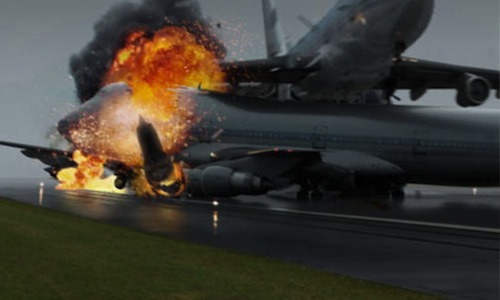
In the technological world of modern air travel, there’s a certain irony in the fact that the majority of aviation disasters are caused by human error. And one of the most common forms of error is miscommunication. Even if just one person makes a mistake, the repercussions can be catastrophic.
Air travel is arguably one of the safest forms of transportation, but when airplane crashes do happen, because of their nature, they can take a devastating toll on human life. Here’s our list of the 10 worst air crashes caused by miscommunication.
10. Avianca Flight 52 (1990)

On January 25, 1990, Avianca Flight 52 was carrying 149 passengers from Bogotá, Colombia to New York. However, because of bad weather conditions and air traffic congestion, the Boeing 707 was forced into a holding pattern off the coast near New York. And after circling for nearly an hour and a half, the aircraft was running low on fuel.
When Flight 52 arrived at Kennedy Airport, due to the fog and wind, only one runway was open for the 33 planes that were attempting to land every hour. What’s more, the flight was delayed again as the aircraft ahead of them failed to touch down. Flight 52’s fuel situation soon became desperate.
Two crucial pieces of miscommunication led to the disaster that was to follow. When the aircraft was passed from regional to local air traffic controllers, the local controllers were not informed that the aircraft had too little fuel to reach its alternative airport. Compounding the problem, crucially the aircraft’s crew did not explicitly declare that there was “fuel emergency” to the local controllers, which would have indicated that the plane was actually in danger of crashing.
As a result, after missing its first attempt to land, the airplane was given a landing pattern that it had too little fuel to execute. While the crew attempted to maneuver the plane, its engines flamed out in quick succession. The Boeing 707 slammed into the village of Cove Neck, Long Island, killing 65 of its 149 passengers and eight out of nine of its crew.
9. Air Florida Flight 90 (1982)
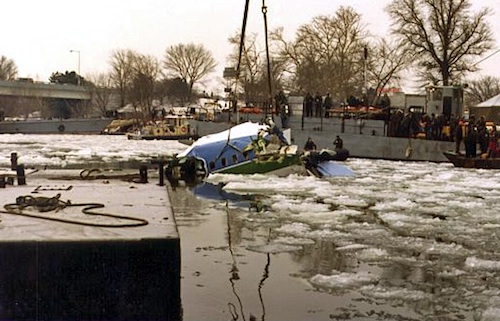
On January 13, 1982, Air Florida Flight 90 was due to travel from Washington National Airport in Virginia to Hollywood International Airport in Fort Lauderdale, FL, with a layover in Tampa.
Conditions were snowy, and the aircraft had been de-iced improperly. Neither did it have its engine anti-icing system activated. This caused instruments to freeze and fail to register the correct readings. So, while the cabin crew thought that they had throttled up sufficiently for takeoff, in actual fact they didn’t have enough power.
The Boeing 737’s run-up took almost half a mile (800m) longer than it should have done. Even as they set off down the runway, the first officer noticed that something was wrong with the plane’s instruments and that it wasn’t capable of getting airborne. However, his attempts to communicate this were brushed off by the captain, who ordered the takeoff to continue.
The plane crashed into the 14th Street Bridge, killing 78 people, including four motorists. Later, reports showed that there was sufficient space for the aircraft’s takeoff to have been aborted – if only the flight crew had been communicating better.
8. Singapore Airlines Flight 006 (2000)
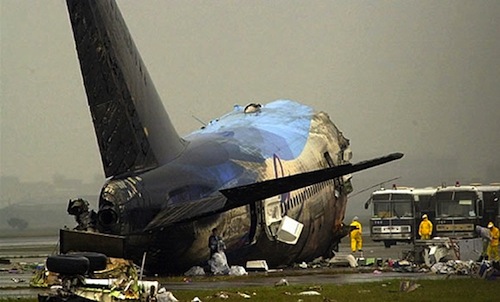
It’s not often that an aircraft collides with a bulldozer yet, tragically, that’s exactly what happened in this next accident, involving an airplane schedule to fly from Singapore to Los Angeles via Taipei. On October 31, 2000, Singapore Airlines Flight 006 was taxiing to its takeoff point in stormy weather. Conditions were bad. There was low visibility thanks to the heavy rain. And crewmembers accidentally steered the Boeing 747 into runway 05R, which was closed for repairs.
The runway was cluttered with excavators, concrete barriers and a small bulldozer, but the pilot was unable to see them because of the inclement weather. The pilots had also apparently failed to read a report issued two months earlier that stated that the runway would be closed. As a result, they began takeoff procedures on the wrong runway.
While attempting to take off, the aircraft collided with the heavy equipment and broke apart. Many passengers seated in the middle of the plane were killed when fuel in the wings exploded and sent fireballs through that section. The final death toll amounted to 83 of the 179 on board, including four crewmembers.
7. Linate Airport Disaster (2001)
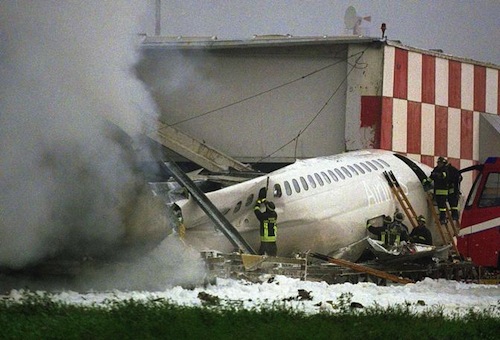
On October 8, 2001, miscommunication played a role in a major collision at Linate Airport in Milan, Italy. The runway was obscured by thick fog, effectively reducing visibility to around 656 feet (200 meters), which may also have contributed to the tragedy, together with factors such as high traffic volume.
A Cessna Citation CJ2 business jet was given clearance to taxi to its takeoff point on a route that would avoid the main runway. However, due partly to poor use of radio communications and lack of proper markings and signs, the Cessna misinterpreted the message and turned in the wrong direction, crossing the main runway. Its route led it into the path of Scandinavian Airlines Flight 686, a McDonnell Douglas MD-87 airliner.
The two planes collided, with Flight 686 traveling at about 170 mph (270 kph). The Cessna went up in flames, while the right engine of the MD-87 was destroyed. The pilot of Flight 686, Joakim Gustafsson, managed to get the plane airborne for a brief period. And in an attempt to regain control, he hit the thrust reverser and brakes – noted as a particularly skilful maneuver. Even so, Gustafsson lost control of the plane, and it smashed into a luggage hangar at the end of the runway. In total, 118 people were killed in the disaster.
6. Dan Air Flight 1008 (1980)
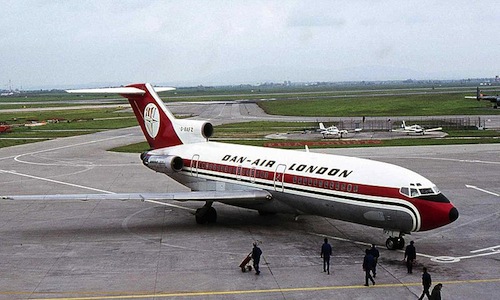
A Dan-Air 727 similar to the accident aircraft
This disaster was caused by a single misheard word. Dan Air Flight 1008 departed from Manchester, England, on the morning of April 25, 1980, en route to Tenerife, one of Spain’s Canary Islands. At 1:21 pm, the plane ploughed into the side of the island’s mount La Esperanza, killing all 146 people on board.
The cause of the disaster was a misinterpretation made by the Boeing 727’s flight crew. The plane was instructed by the control tower to take an unpublished, not officially approved, and potentially dangerous holding pattern above Los Rodeos Airport. But the pilot also seems to have mistaken the word “inbound” for “outbound” in the instructions he received, flying in the opposite direction to which he was supposed to.
This turn in the wrong direction took the plane through an area of exceptionally high ground. And due to the airport’s lack of ground radar, the air traffic controllers were unable to tell the flight crew that the plane was off course.
Heavy clouds obscured the crew’s vision, likely preventing them from seeing the looming threat of the mountain. The first sign they had of any impending danger was when the plane’s ground proximity warning device was triggered. The crew attempted a steep climb, but the aircraft slammed into the mountainside, killing everyone on board instantly.
5. PSA Flight 182 (1978)
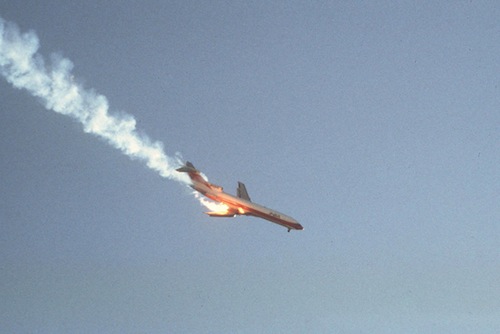
On September 25, 1978, Pacific Southwest Airlines Flight 182 was making a routine trip from Sacramento to San Diego. In the vicinity, an instructor was giving one of his students flying lessons in a private Cessna aircraft.
At some point, the Cessna made an unauthorized change of course, which put it on the same flight path as the much larger Boeing 727. At first, both pilots managed to steer clear of each other. But communication between the crew and airport control sounded nervous prior to the crash.
In the transmissions between air traffic control and Flight 182, the crucial word “passed” appears to have been misheard as “passing,” causing the controllers to believe that the flight crew knew the location of the Cessna. In fact, they had lost sight of the plane.
Less than two minutes after the transmission, the Cessna slammed into the bottom of Flight 182’s right wing. The Cessna broke to pieces, and the Boeing 727’s right wing was shattered. Both aircraft plummeted into a San Diego neighborhood, killing all 135 onboard on Flight 182, seven people on the ground, and both the Cessna pilots.
Witnesses at the crash site reported utter carnage, with blood and pieces of people’s bodies strewn across the entire area. In the end, if the crew of Flight 182 had managed to clearly communicate to air traffic control that they had lost sight of the smaller plane, California’s deadliest ever aircraft disaster might have been averted.
4. American Airlines Flight 965 (1995)
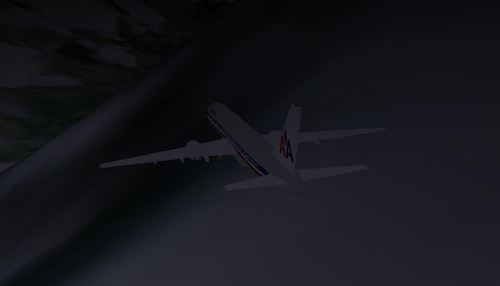
On December 20, 1995, American Airlines Flight 965 was flying from Miami to Cali, Colombia, carrying 163 passengers and crew. On approach to the airport of Cali, the crew accidentally erased the waypoints that would have allowed them to navigate to the airport.
It was at this point that two miscommunications occurred. First, the captain entered the first “R” on the list of waypoints available, inadvertently sending the plane directly towards Bogotá, through a valley that put it on a collision course with mountainous terrain. Next, the air traffic controller at Cali, Nelson Ramírez, sensed that something was wrong, but he did not know enough English to correct the errant plane.
Flight 965 slammed into the 9,800-foot (3,000-meter) mountain, despite the flight crew’s last-minute efforts to pull out of the collision. In total, 159 people were killed in the crash, leaving only four survivors (initially five), who were all sitting within two rows of each other. A dog was also rescued from the wreckage.
3. Garuda Indonesia Flight 152 (1997)
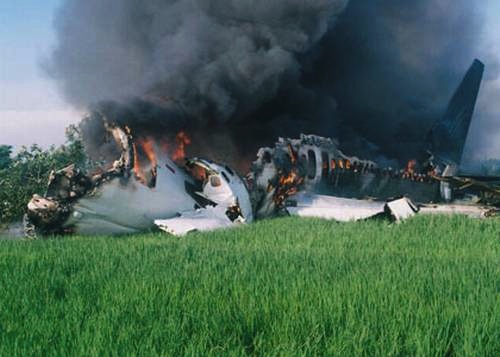
On September 26, 1997, Garuda Indonesia Airlines Flight 152 was traveling from Jakarta to Medan. While making its final approach, the pilot called Medan airport for help, complaining of poor visibility due to forest fires burning below.
At the time, the fires had caused delays, and three planes were waiting to land at Medan. Confusion arose because two of the aircraft had the same flight number. And in the chaos, air traffic control allegedly pulled the doomed Garuda Flight 152 off its regular course.
However, it seems that the crucial element of the disaster was a massive failure of communication between the pilot and the airport. Just before the plane – an Airbus A300 – was due to land, air traffic control ordered the pilot to turn right instead of left. A mix-up resulted, and the flight crashed in mountainous terrain, killing all 234 individuals on board. Chillingly, one minute after the plane turned in the wrong direction, the pilots were heard screaming.
2. Charkhi Dadri Mid-Air Collision (1996)
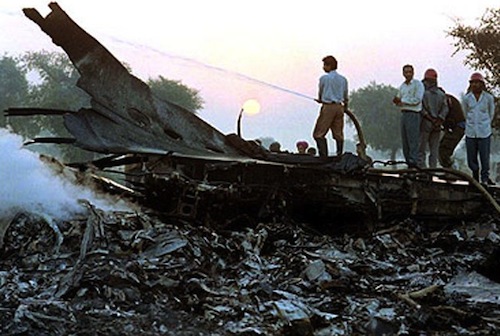
The Charkhi Dadri mid-air collision the occurred on November 12, 1996 is the worst mid-air crash in the history of aviation. Kazakhstan Airlines Flight 1907 collided with Saudi Arabian Airlines Flight 763 at an altitude of almost 14,000 feet (4,300 meters), killing all 349 people on board both planes.
The cause of the disaster can be traced back to communications difficulties in the Kazakhstani plane. None of the Kazakhstani flight crew, except the radio operator, understood English, so they were completely reliant on him to communicate with air traffic control. The radio operator also lacked his own set of instruments and had to look over the shoulders of the pilots in order to find out information, such as the aircraft’s height.
The result of this was that Flight 1907 descended more than 1,000 feet (300 m) below its assigned altitude of 15,000 feet (4,600 meters), while struggling with turbulence inside a bank of cloud. The radio operator noticed the descent and told the crew to bring the aircraft back up, unfortunately placing them square in the path of the Saudi Arabian Boeing 747.
The resulting collision destroyed the left wing and stabilizer of Saudi Arabian aircraft, sending it spiraling towards Earth, disintegrating as it fell. Flight 1907, meanwhile, crashed into a field. Four survivors were recovered from the wreckage of the Kazakhstani plane, but all of them died soon afterwards.
1. Tenerife Airport Disaster (1977)
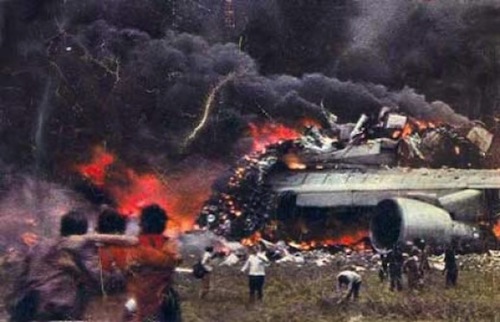
The worst air disaster of all time occurred at Tenerife’s Los Rodeos Airport (now known as Tenerife North Airport) in the Canary Islands. Two Boeing 747s, Pan Am Flight 1736 and KLM Royal Dutch Airline Flight 4805, collided in fog, killing 583 people and leaving only 61 survivors. Unfortunately, the causes of the disaster boil down to possible impatience and a very basic error of communication.
On March 27, 1977, Los Rodeos Airport was covered in heavy fog and was overcrowded due to traffic being diverted from Gran Caneria Airport, where a bomb had exploded. This may also have meant that direction from air traffic control was more muddled than usual.
KLM pilot Jacob van Zanten was eager to leave. Van Zanten and his crew had almost reached the legal limit of their on-duty time and would have to stay in Tenerife overnight unless they got going soon. This may have contributed to the pilot’s fatal mistake when he received the communication “you are clear” from the air traffic control tower.
A second clearance was required before van Zaten could take off, but instead he began to accelerate down the runway. In the meantime, the Pan Am flight, which was attempting to find its assigned taxiway in the heavy fog, was directly in the KLM airplane’s path. The resulting collision obliterated the Dutch plane, sending it some 100 feet into the air before it came crashing down and exploded in a ball of fire. The Pan Am flight was sliced into pieces and also went up in flames.
